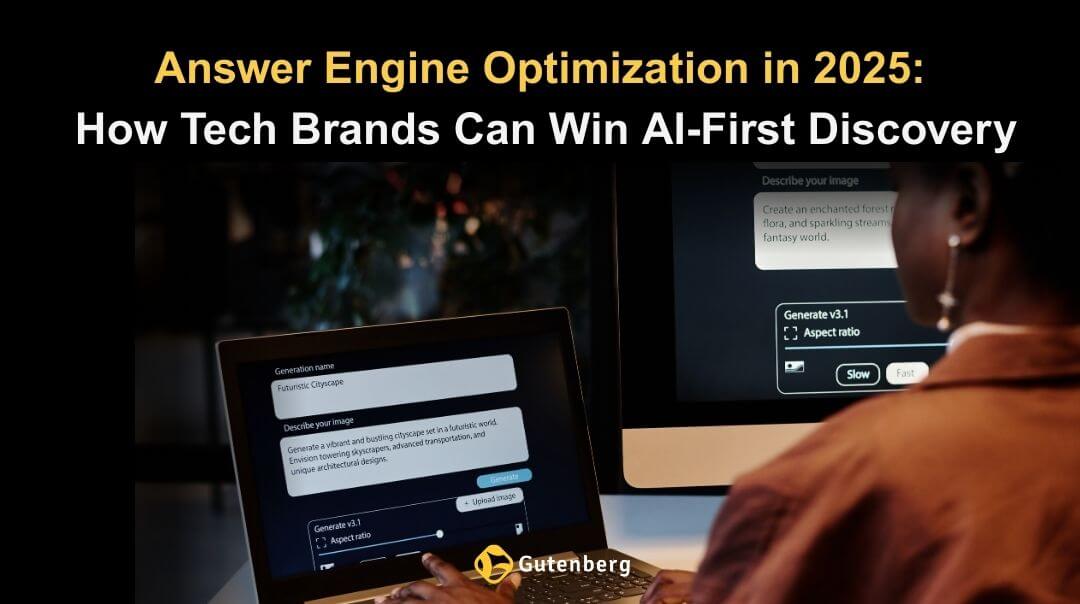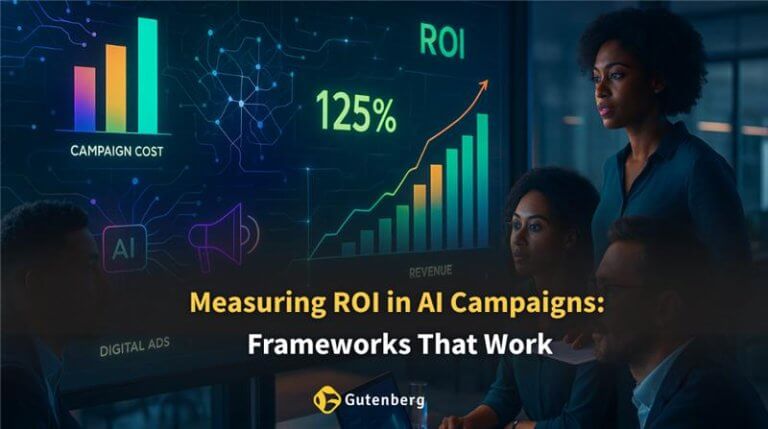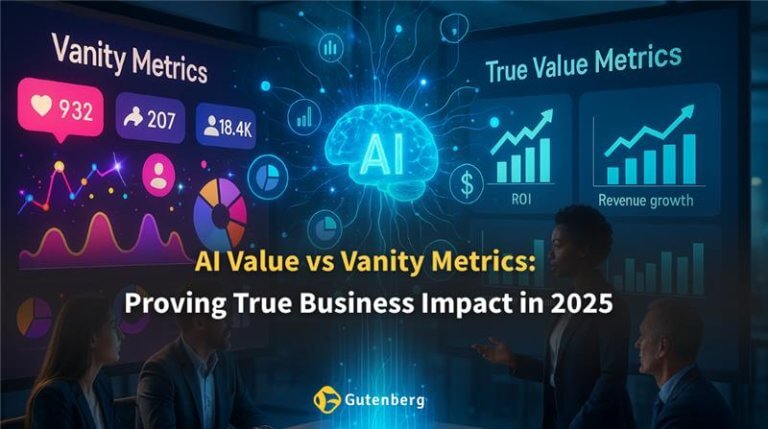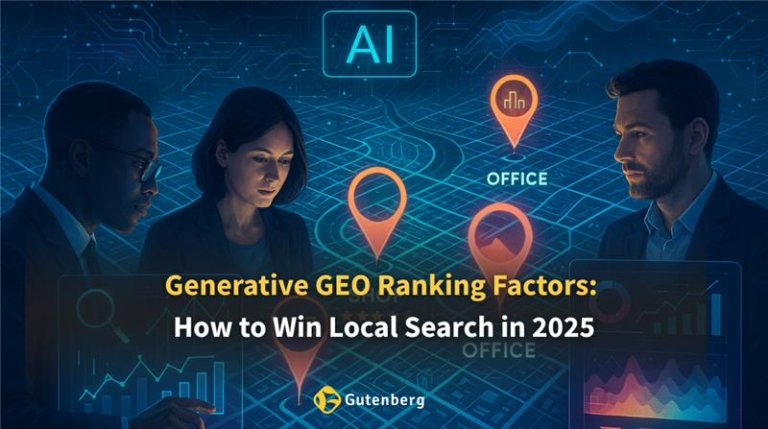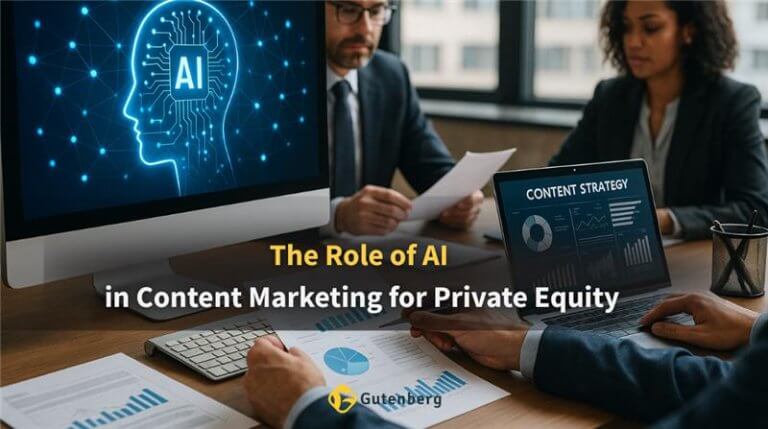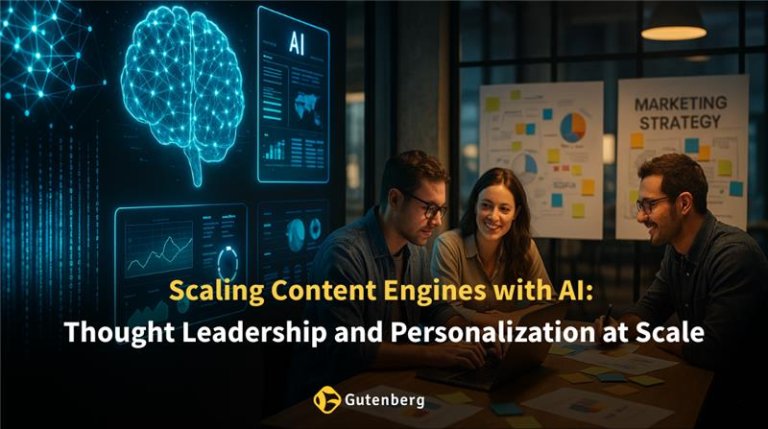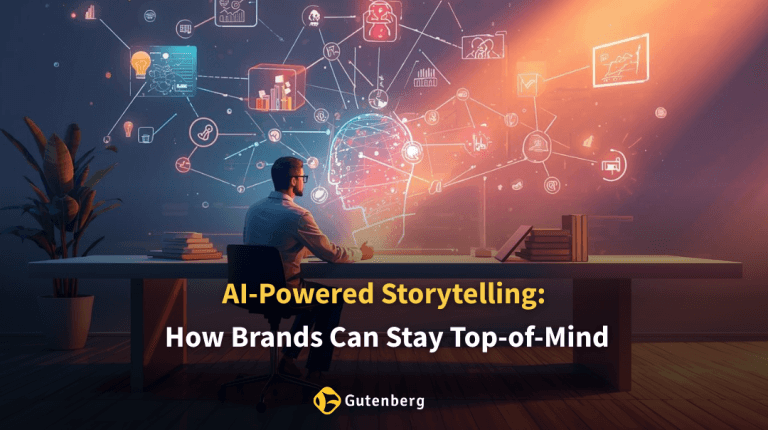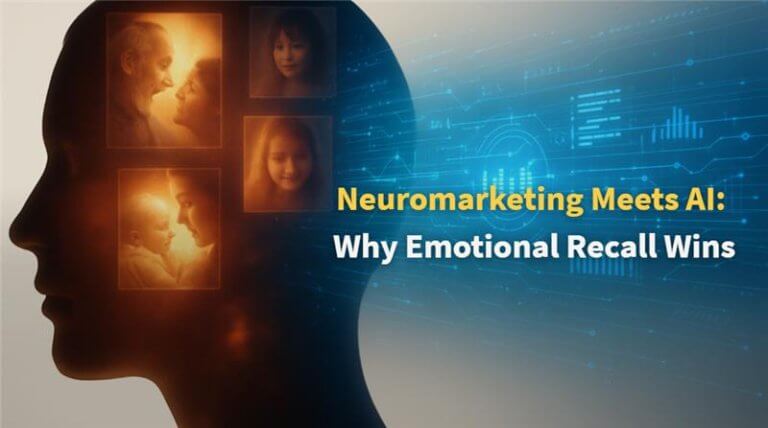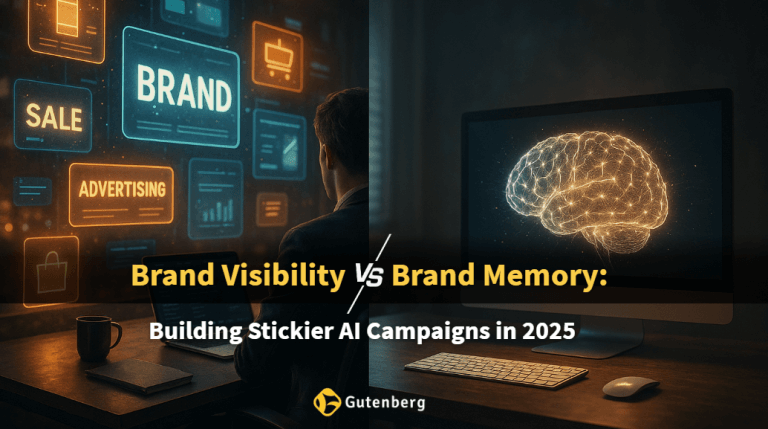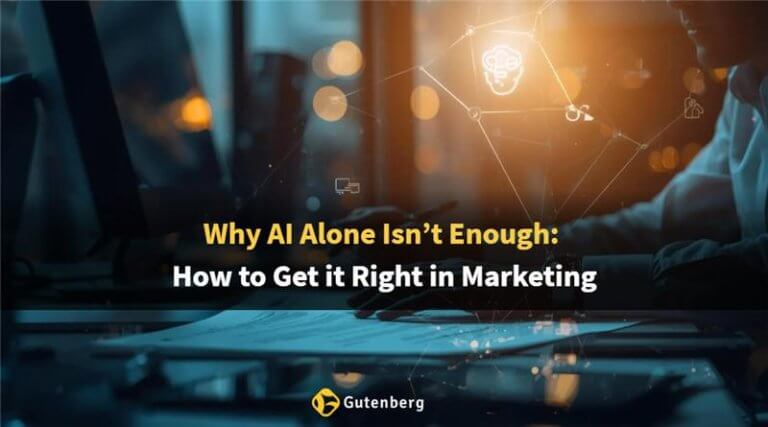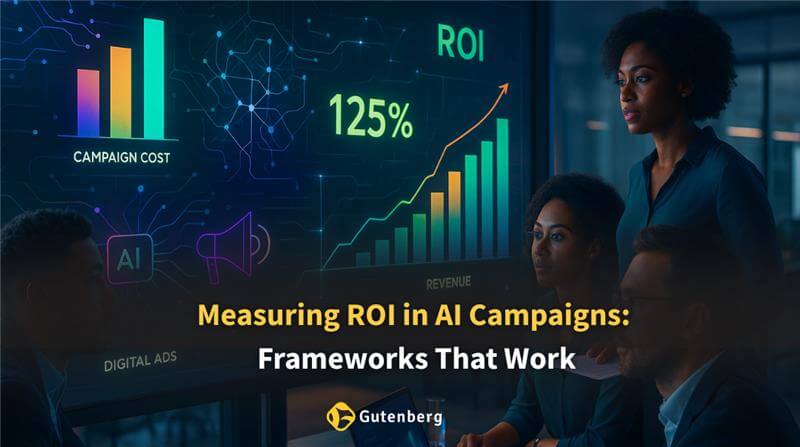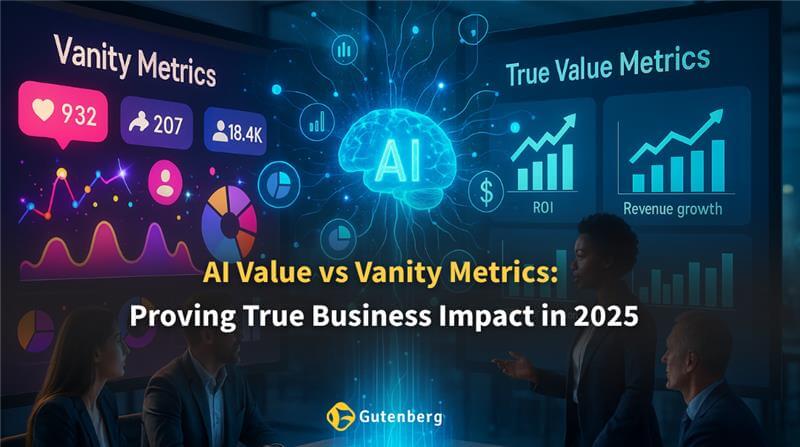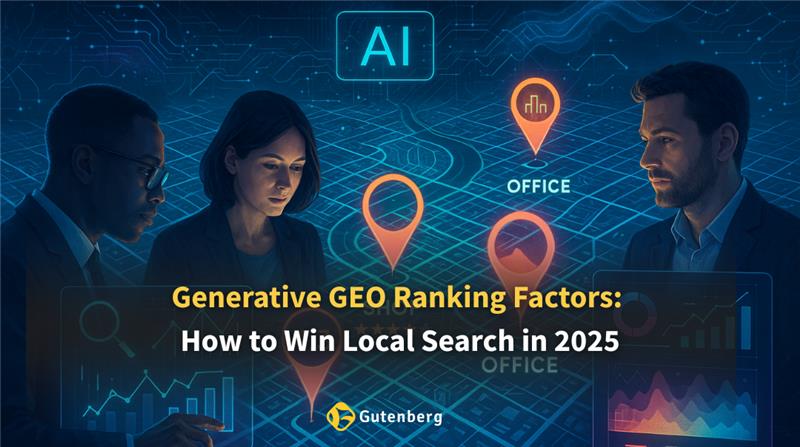AI-first search has completely redefined how people discover information online. The move from classic blue links to direct, conversational answers marks a fundamental shift—and for tech brands, that shift is accelerating in 2025. In this blog, we’ll break down answer engine optimization strategies, the critical role of AI-first search, and the evolving landscape of AI SEO strategy. You’ll see why investing in AEO vs SEO is no longer optional but essential, how the future of SEO is shaped by AI, and what AI discovery optimization means for your brand’s visibility.
We’ll explore:
- Why answer engines: are now the front door to discovery.
- Key differences: between traditional SEO and AEO.
- Strategic tactics: tech brands must adopt.
- Platform spotlight: a look at Gutenberg designed for the AI-driven era.
Understanding Answer Engine Optimization (AEO)
Answer engine optimization strategies go beyond simply ranking for keywords. AEO focuses on helping your content become the direct source for answers delivered by AI and voice assistants. Unlike traditional SEO that optimizes for blue links in search results, AEO ensures content is structured, chunkable, and instantly retrievable by AI models.
AEO vs SEO matters more than ever because users increasingly expect immediate, relevant answers—not long lists of links. The shift is real: Google’s top organic click-through rate dropped 32% after rolling out AI Overviews, falling from 28% to 19%. The demand for accurate, direct response is why answer engine optimization strategies are essential for anyone invested in the future of SEO.
Search Engine vs. Answer Engine: Key Differences
| Criteria | Traditional SEO | Answer Engine Optimization (AEO) |
|---|---|---|
| Intent Parsing | Keyword-based | Conversational, question-based |
| Result Formatting | Blue links/snippets | Direct, contextual answers |
| Ranking Factors | Backlinks, content density | Structured data, trust, topicality |
| Content Requirements | Optimized articles/pages | FAQs, knowledge graphs, action guides |
AI-First Search: Reshaping Discovery
AI-first search isn’t just a trend—it’s embedded in daily digital life. Platforms like Google’s SGE, Bing Copilot, and AI tools such as ChatGPT and Gemini have changed the rules. AI now interprets natural language questions and delivers context-rich answers, not just a stack of results.
In 2025, AI-powered tools like ChatGPT and Gemini account for almost 3% of all search engine traffic, an explosion from near-zero in 2022. Consumers are embracing these experiences: 74% of marketers use AI for at least part of their workflow, yet only 22% track LLM brand visibility. For tech brands, AI discovery optimization is now a core marketing pillar.
How AI Engines Interpret and Present Information
- Intent parsing: AI first parses intent, then fetches, summarizes, and cites content in a conversational answer.
- Source selection: Answer engines source both high-ranking and deeper, authoritative content for more nuanced answers.
- Visibility factor: Visibility is earned by being cited, not just ranked.
| AI Search Traffic Growth | 2022 | 2025 |
|---|---|---|
| Share of US Search | ~0% | 2.96% |
| Projected by 2028 (marketing topics) | — | >Traditional search (SEMrush, June 2025) |
AEO vs SEO: Core Differences and Why They Matter
Classic SEO isn’t enough to secure a place in the AI-powered landscape. Answer engine optimization strategies require different signals: entity authority, structured data, and clear, concise content blocks targeted at natural questions.
AEO vs SEO: A Closer Look
| Feature | Traditional SEO | AEO |
|---|---|---|
| Focus | Ranking with keywords | Providing accurate answers |
| Content Structure | Longform, keyword-dense | FAQs, “People Also Ask,” definitions |
| Optimization Target | SERP positions | Citation and use in AI responses |
| Tracking Success | Rankings, organic clicks | AI engine mentions, answer selection |
With AI engines summarizing answers, Google’s rollout of AI Overviews cut top position click-through rates by over 30%. Brands not optimizing for direct answers risk fading from user attention. The future of SEO is about being cited, trusted, and embedded into AI-driven discovery journeys.
Core Answer Engine Optimization Strategies for Tech Brands
To thrive in this new search landscape, tech brands need a toolkit of AI SEO strategy and answer‑centric tactics:
Key AEO Strategies
- Use structured data and schema markup: Help AI models extract context and facts quickly.
- Design chunkable, action-focused content: FAQs, How‑tos, “People Also Ask” sections, and visual‑rich summaries.
- Refine authority and trust signals: Bio markup, digital PR, recognized sources, and strong entity linkages.
- Optimize for LLMs and AI chatbots: Structure content for clarity and ease of citation within answer blocks.
- Monitor and audit AI engine citations: Use tools like Semrush Enterprise AIO to track brand mentions and refine positioning.
Discover how Gutenberg equips tech brands to own the answer space with advanced AEO‑ready modules for AI‑first search. Harness our semantic, modular platform to gain visibility across Google SGE, ChatGPT, and more. Talk to our team and see your brand’s answers in action.
The Future of SEO: Embracing AI Discovery Optimization
As we look ahead, the future of SEO is seamless AI integration. Websites will prioritize answer modules, entity data, and modular knowledge bases over static pages. AI discovery optimization will mean mastering new formats, conversational schema, and continuous authority‑building.
Emerging Best Practices
- Build modular content: easily “chunked” answer modules.
- Integrate structured data: with entity‑focused markup.
- Track AI engine citations: alongside rankings and SERP features.
- Evolve digital PR: target high‑authority AI data sources (Quora, Reddit, expert roundups).
- Adopt LLM tracking tools: to provide clear AI visibility metrics.
Stat to note: AI‑powered search visitors are predicted to outnumber traditional searchers for marketing topics by 2028.
Spotlight on Gutenberg: AEO‑Ready Platform for Tech Brands
Gutenberg offers a flexible platform engineered for answer engine optimization strategies and AI‑first search realities. Built for SEM, knowledge graph, and direct‑answer optimization, Gutenberg makes your brand’s content discoverable by both humans and machines.
Key Features
- Semantic search: modular knowledge base structuring.
- Dynamic modules: optimized for context and surfaceability.
- Built‑in AI tools: markup and real‑time audit support.
- Continuous updates: new schema types and “chunked” answer support.
Curious how Gutenberg can transform your content for the AI era? Connect with our team for a personalized walkthrough and discover how your answers can be the ones AI recommends.
Conclusion: Take Action Now—AEO is the New Must‑Win Battleground
Answer engine optimization strategies are no longer an “extra” — they’re foundational to winning in the world of AI‑first search and evolving discovery. Start by:
- Audit readiness: review your site for AEO gaps.
- Restructure content: for direct, structured answers.
- Track citations: and implement AI SEO strategy tactics.
- Explore platforms: like Gutenberg to power your AEO transformation.
The brands that master AEO vs SEO and make AI discovery optimization a continuous practice are the ones users will trust — and AI engines will cite.
Frequently Asked Questions
1. What is answer engine optimization and why is it important in 2025?
Answer engine optimization focuses on making content directly usable by AI‑powered tools that deliver conversational, in‑line answers to users. This approach ensures better visibility across search and chat‑based interfaces.
2. How does AEO differ from traditional SEO practices?
Traditional SEO targets ranking through keyword relevance and backlinks, while AEO emphasizes structured data, clarity, and entity‑based content that AI engines can cite directly.
3. Why is AI‑first search changing how brands should think about visibility?
AI‑first search focuses on direct answers instead of link lists. This change means brands must shift from ranking strategies to answer‑focused content design and optimization.
4. How can businesses prepare content for AI‑powered search engines?
Content should be modular, structured for clarity, and designed to answer specific user questions. Gutenberg offers built‑in formatting tools to help with AI readability and answer extraction.
5. What does AI discovery optimization involve?
It includes updating schemas, improving topic authority, and ensuring content aligns with how AI models extract and present answers. This goes beyond ranking to being selected as a trusted source.
6. Is AEO only relevant for search engines like Google?
No. AEO also applies to AI platforms like ChatGPT, Gemini, and Bing Copilot. With Gutenberg’s semantic tools, brands can extend their content reach across these AI‑first environments.

